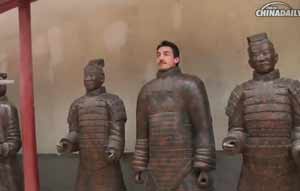Time of opportunities, challenges
Updated: 2013-09-13 01:08
By HE WEI and WEI TIAN (China Daily)
|
|||||||||||
FTZ could pioneer way for others
By He Wei
The State Council approved the establishment of the Shanghai Free Trade Zone on July 3, an endeavor that will catapult the city to the forefront of global financial, trade and logistics centers.
Covering 28.78 square kilometers, the new zone will be built on the basis of existing bonded ones, Waigaoqiao Free Trade Zone, Waigaoqiao Free Trade Logistics Park, Yangshan Free Trade Port Area and Pudong Airport Comprehensive Free Trade Zone.
The project, mapped out at the start of this year, is the first of its kind in China. Many view it as a prototype for similar zones in other cities that could help bolster the national economy amid a period of declining growth.
According to a statement by the Ministry of Commerce on August 22, the proposed zone will help China explore a new path of opening-up, accelerate the transformation of government functions and promote economic restructuring.
When completed, it will provide world-class transport and communications facilities and a tax-free environment for domestic and foreign enterprises, thus facilitating its role as a major hub for their supply chains in Asia.
Last month, the city released a series of detailed guidelines for policy changes. These included measures to allow more private capital in the banking sector, and ways to promote cross-border use of the yuan.
Shanghai will strengthen its role as a settlement center for international trade and pilot fund management for multinational companies' headquarters. It also looks to include more businesses in its inter-bank foreign exchange settlement plan.
The central government has yet to formally publish any detailed plans or set out a timeline for the free trade zone. However, it is seen as a platform on which to test a string of liberalization policies in a wide range of business sectors, including the banking, telecommunications, culture and entertainment industries.
A draft plan was submitted to the National People's Congress in August for approval that would suspend certain laws in the Shanghai Free Trade Zone in a bid to remove legislative hurdles for the pioneering undertaking.
The four pieces of ordinance under review are the Law on Foreign-capital Enterprises, the Law on Chinese-foreign Equity Joint Ventures, the Law on Chinese-foreign Contractual Joint Ventures and the Law on Cultural Relics Protection.
Timeline
Shanghai FTZ
• 2005
Shanghai, Shenzhen and Tianjin all applied to the State Council to upgrade their respective tariff-free zones to the status of a free trade zone.
• In November 2011
Shanghai announced during the 11th World Free Zone Convention that it would embark on building an FTZ.
• In March 2013
During his visit to the Waigaoqiao bonded area, Premier Li Keqiang suggested that Shanghai should study building a FTZ on the basis of existing bonded areas.
• May 14
The Shanghai FTZ was launched as a national-level project.
• June
A modified version of the plan was submitted to the related ministries for approval.
• July 3
A draft plan of the Shanghai FTZ was passed at an executive meeting of the State Council.
• Aug 16
An executive meeting of the State Council decided that certain domestic commercial laws and regulations would be suspended in the area to remove barriers to foreign investments.
• Aug 22
The Ministry of Commerce said the State Council had officially approved the establishment of the Shanghai FTZ.
Related Stories
Shanghai FTZ tests China's currency liberalization 2013-09-12 19:07
Shanghai FTZ 'will have innovative tax policies' 2013-09-12 16:12
Tough tasks for Shanghai FTA pilot zone 2013-09-06 17:08
Today's Top News
World Bank shares green path with China
More foreigners get green cards
FM hails US-Russia deal
Stranded cruise guests flown home
Fallen celebrity blogger says Net needs cleanup
Request for blood of female virgins misread
College students face tougher English tests
Wushu proposed as school sport
Hot Topics
Lunar probe , China growth forecasts, Emission rules get tougher, China seen through 'colored lens', International board,
Editor's Picks

|

|

|

|

|

|





